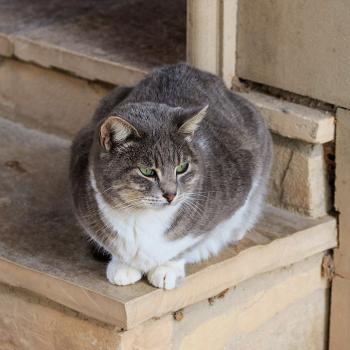I’ve recently returned from some travels to the Andalusia province in Southern Spain. Under Muslim Rule in part or in whole from the arrival of “the Moor” in 711 until the completion of the Reconquista in 1492, the region has a special claim on our attention today in light of present-day misunderstandings and conflicts between Islam and “the West.”
The name Andalusia is derived from the Arabic word Al-Andalus, which means the land of the Vandals (Vandalusia), the “barbarian” people who thrived there before they were later overrun by the Visigoths. In its heyday under Muslim rule, ca. the 900s to 1200s, its capital city, Cordoba, was the “ornament of the world,” giving birth to the so-called convivencia, an era of relative—and often Romanticized–tranquility between Jews, Christians, and Muslims. The era witnessed the scholarly productions of the likes of Maimonides (ca. 1135-1204) and Averroes (1126-1188), who revived the thought of Aristotle, making it available for later Christian theologians such as Thomas Aquinas.
A visit to the great “Mosque Church” (Mezquita) of Cordoba was especially instructive. Emir Abd al Rahman I built the original mosque on the site of a Visigothic Christian (Arian) Church, which itself had been established atop a temple dedicated to the Roman god, Janus. Its distinguishing features are 850 columns and countless red and white double arches built of jasper, onyx, marble, and granite. Jews, Christians, and Muslim labored side by side on the mosque—the signatures of many of the master builders can still be found in the stones.
In 1236, Cordoba fell to the Catholic monarch Ferdinand II of Castile and the mosque was converted into a church. The minaret was re-purposed as a bell tower, which still calls Catholics to Mass today. Later many side chapels were added. But the most significant addition came in the sixteenth century with the building of a Renaissance cathedral nave in in the middle of the expansive era. King of Castile and Aragon and Holy Roman Emperor Charles V gave permission for this insertion, but when he visited the city, he famously commented: “they have taken something unique in all the world and destroyed it to build something you can find in any city.”
He exaggerated. The original mosque structure still preponderates, even if the worship that takes place in it today is exclusively Catholic. This reality has rankled some Muslims. The Islamic Council of Spain in fact once lodged a formal request to allow Muslims to pray in the mosque. Spanish church authorities have consistently opposed this. In 2004, the Vatican’s Pontifical Council for Inter-religious Dialogue rejected a similar request from the same group.
In April 2010 during Holy Week, two Muslim tourists were actually arrested when they with a handful of other Muslims knelt to pray. According to reports, security guards stepped in and asked them to continue their tour or leave the premises. When they refused, a scuffle broke out. Two security guards were injured, and the two Muslim men, one wielding a knife, were detained. In a statement Catholic authorities condemned the incident and reiterated that they would not allow other religions to practice inside the church.
The point of all this: old tensions die slowly, and the architectural legacy of Cordoba’s amazing “Mosque Church” encodes some of the reasons for this in its history.












